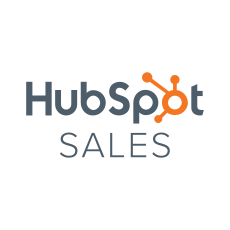Technology use for Small Business success and profit
The tech doesn’t matter. This might seem like a strange thing to say in a blog focusing on technology, but it’s true. These days, technology has become a commodity. Every phone is a smartphone these days, and they all do pretty much the same thing. All Internet is high-speed – the only difference is HOW fast your fast Internet is.
Pentium won the computer chip wars and, while there are chips from other manufacturers, most of the PCs you’ll buy regardless of make or model will be powered by some type of Intel chip. Rather than getting caught up on which or what type of technology we are using, the focus is now on how the technology is used, and what benefit it can provide to the user.
So toward that end, let’s take a look at how we can leverage technology to the greatest advantage, regardless of what type of technology we happen to be talking about:
Don’t get hung up on platforms
WordPress vs. SquareSpace. HP vs. Dell. Windows vs. Apple. Which is better? Does it matter? Actually… no.
What matters is which will be more effective for you. I have a saying – “it’s not the tool you choose: it’s the tool you use”. Are you a lifelong Mac user? Then it doesn’t really make much sense for you to buy a Windows 10 PC for you next upgrade. What’s more important to you in building your website – speedy development, or flexibility and expansion? If you want to build a website quickly, by all means use SquareSpace. If you want a website that can do anything you can imagine, and grow as your business grows, WordPress is more likely your solution.
Make your technology choices based on what you need, what you are up to, and where you see your business heading in the near future. Choose the platform that best suits your plans.
Don’t follow trends or “the latest cool thing”
Often, many Small Business owners and entrepreneurs ask me “how can I use Instagram/Pinterest/Snapchat for my business?” My first response is to ask them why they’re considering using that technology. If their answer is that they heard about it from a friend, relative or associate, read about it in a magazine or blog post, or saw a report about it on TV, I realize that they’re chasing trends rather than making a business decision.
Most Small Businesses have websites because “somebody told them they should have one”. The problem is, nobody told them why they should have a website, or what that website should do for them. And websites are a basic necessity these days. Before we go chasing the latest cool new thing, we must examine why we select the tools we choose. What does Instagram do? Who uses Pinterest… and how? What can Snapchat bring to my business, my customers and my potential clients?
If I can’t answer any of those types of questions, then I’m probably not selecting technology that will benefit my business ventures; I’m considering a choice based on hype and advertising. Too many of us get stuck with useless gear and budget-busting payments because we make tech purchases based on impulse. That latest bright and shiny gear may look tempting, but make sure it’ll bring you more than a hit to your credit card.
Build an infrastructure
 There are several good, free email services available: GMail, Hotmail (now Outlook.com), even YMail (one of the few good things Yahoo! has left). As far as sending and receiving email, they’re all pretty much the same. If asked which I prefer, I recommend GMail. Why is that? Outlook.com offers more storage (1TB vs 15GB), and provides online versions of Windows, Excel and PowerPoint which are superior to the document editors provided by Google Docs. Despite all this, I advise all my Small Business clients to use GMail.
There are several good, free email services available: GMail, Hotmail (now Outlook.com), even YMail (one of the few good things Yahoo! has left). As far as sending and receiving email, they’re all pretty much the same. If asked which I prefer, I recommend GMail. Why is that? Outlook.com offers more storage (1TB vs 15GB), and provides online versions of Windows, Excel and PowerPoint which are superior to the document editors provided by Google Docs. Despite all this, I advise all my Small Business clients to use GMail.
The reason is that GMail is the gateway to building a free, online infrastructure. While they don’t offer as much storage, and are a bit behind in their text editing services, the full spectrum of what they offer allows Small Businesses to create a set of tools that enable them to run their business like a much larger corporation:
Google Maps allows you to find any location, plan the route there and back by car, public transportation, bicycle or on foot, informs you of the current traffic conditions and even shows you a three-dimensional view of your destination as if you were standing in front of the building. Google Calendar lets you plan your day, schedule meetings and appointments with many people, synchronize your personal calendars and send reminders via email and text message notifications.
Google Drive gives you an online hard drive where you can store and share documents, images, audio files and more. No more carrying USB thumb drives around – upload them to your Google Drive folder and share the link. Send the link via email rather than attaching the file and get past the maximum file size limit. And while Microsoft’s Outlook.com online Office tools offer superior online document creating/editing functions, Google Drive has one feature that runs rings around Outlook.com – Google Forms. Just click the words “Google Forms” to check it out — there’s so much there, it would require its own blog post to go into…
Google Voice is the best kept secret of the Small Business Internet. Choose a free phone number within your area code. Link all your existing phone numbers – home phone, work number, cell phone and others – with this number. Give out this assigned phone number to all your contacts. Now, whenever that number is called, every phone associated with that number rings. Answer from wherever you are. Let the call go to voice mail, and the voice mail is recorded online – and transcribed. Send and receive text messages from any web browser. Make free phone calls to any US number from a PC or tablet.
All these services are linked to your GMail account. Combined, they give you the power to build a professional-caliber technology infrastructure to run your business like a major corporation.
Future proof
How many VCRs are sold these days? Anybody have a Roxio MP3 player? A floppy disk? A dial-up modem?
When choosing the technology that forms the fundamentals of your Small Business infrastructure, it helps to have an eye on the future. What seems current and contemporary today may soon be obsolete. Making choices that are tied to closely to a specific hardware or software can lock your Small Business into obscurity when that platform becomes outdated, or replaced by something that shifts the playing field. How, then, do we protect against being trapped by our technology.
While nobody can predict the future, the surest way to “future proof” Your Small Business is to make the move to the cloud. “The Cloud” is mostly a catch-all term that means technology that is not installed on local computers, and runs on multiple computers at the remote locations to protect against loss of services caused by the failure of a single machine. As long as you have a web browser running on your computer, you will be able to access and utilize these programs and platforms.
The software will be updated without any need for you to adjust anything on your local machines. No matter what is changed in the cloud, you will be able to access your data and the functions required to maintain and manipulate it.
Focus on the business essentials
Customer relations. Accounting. Inventory management. Marketing outreach. Every Small Business has a core set of functions which they must perform, whether they are in retail selling physical items or are providing a service to their customers face-to-face or remotely. You’ve still gotta manage the business aspect of things, whatever you do.
You’ve got to get the word out. You have to inform new customers of the value you provide, and entice them somehow to choose you, and do business with you. You’ve got to make the pitch, close the deal, get the money, and do the work. Then, make sure the work is done, the invoices are paid — and the bills as well.
Also, you’ve got to keep track of how much you’re actually making… and how much of that is profit (gross vs. net). You should be tracking how well you’re doing over time (quarterly or annual reviews). If you hire contractors, full- or part-time employees, there are all sorts of other business-related functions involved. This is just a bit of the overwhelm which can bog down – or bring down – a Small Business just as it’s expanding into profitability and success.
The time to put this kind of infrastructure in place – the operational infrastructure, not just the technological one which is the framework that operations run on top of – is when you’re still a solo operation, when you’re just getting started. Believe me, you’re going to want all of this stuff in place long before you need it, because when things start to pick up you’ll be too busy DOING business to have any time or energy left to BUILD the business as it’s running full out on all cylinders.
You can assemble most of the required parts online – accounting, billing/invoicing, payroll, marketing, inventory, workflow/task/project management, etc – I recommend you try to assemble as many of these components under a single umbrella. Either find one vendor that provides as much as possible, with integration to other “best of breed” partners for the parts they don’t handle themselves, or chose a framework that you can hang the various parts on, giving you a central “command post” to coordinate your business operations from a single location, regardless of how many separate providers you actually deal with.

HubSpot Sales offers free CRM (Customer Relationship Managment) tools which integrate with GMail – making it easy to expand the infrastructure recommended above into a more fully-functional business operations platform.
 Wave Accounting offers accounting, invoicing, expense tracking, links to multiple bank accounts, access to multiple partners and your accountant — all for FREE.
Wave Accounting offers accounting, invoicing, expense tracking, links to multiple bank accounts, access to multiple partners and your accountant — all for FREE.
 WordPress offers the single best “one stop shopping” solutions for Small Businesses. It’s available as a one-click install by all web hosting providers. It’s not only free to use, it free to enhance and modify if you have or can hire the skills. Even if you don’t, with over 45,000 plugins, it’s as easy to add features and functions to a WordPress website as it is to add apps to your smartphone. EVERYTHING you need to do for Your Small Business operations is available via one of several well designed and maintained WordPress plugins. And as the number one website platform in the world, there’s no shortage of people with expertise in developing and deploying WordPress websites.
WordPress offers the single best “one stop shopping” solutions for Small Businesses. It’s available as a one-click install by all web hosting providers. It’s not only free to use, it free to enhance and modify if you have or can hire the skills. Even if you don’t, with over 45,000 plugins, it’s as easy to add features and functions to a WordPress website as it is to add apps to your smartphone. EVERYTHING you need to do for Your Small Business operations is available via one of several well designed and maintained WordPress plugins. And as the number one website platform in the world, there’s no shortage of people with expertise in developing and deploying WordPress websites.
Use what you’ve got
At the end of the day (and the beginning of the work week), you’ve got to start somewhere. Do you already use an accounting program, like Quickbooks or TurboTax? Look into how you can enhance them with online features, giving you the flexibility of on-the-go access and untethering you from your desktop computers. If you have a website, explore what can be done to add marketing, CRM, booking and other features to turn your static, online brochure into a 24/7 customer engagement platform.
Definitely utilize every ounce of power your online email account has to offer. As mentioned above, if you have a GMail account, you’ve got the making of a corporate-level online infrastructure. Even Outlook.com accounts provide a built-in Microsoft Office Online toolkit for free. Software that once cost hundreds of dollars a year is now yours from anywhere you can connect a web browser to the Internet.
Truly, unlike any time in the past, it’s not the tools you choose, but the ones you use, that determine how successful, how productive and how profitable you can be in you Small Business efforts. Let’s get BUSY…!







